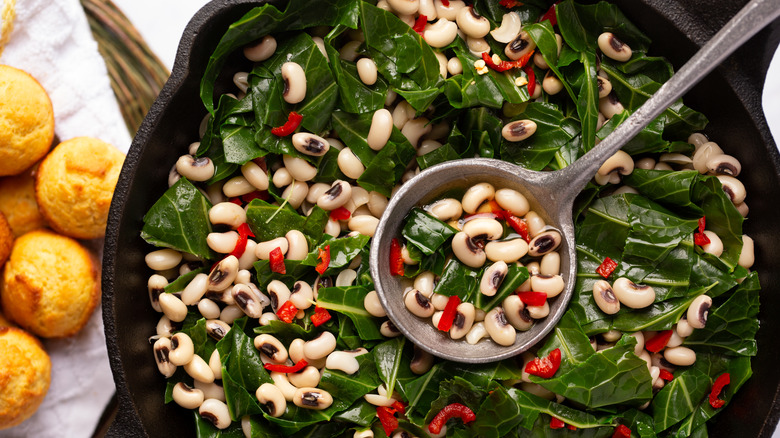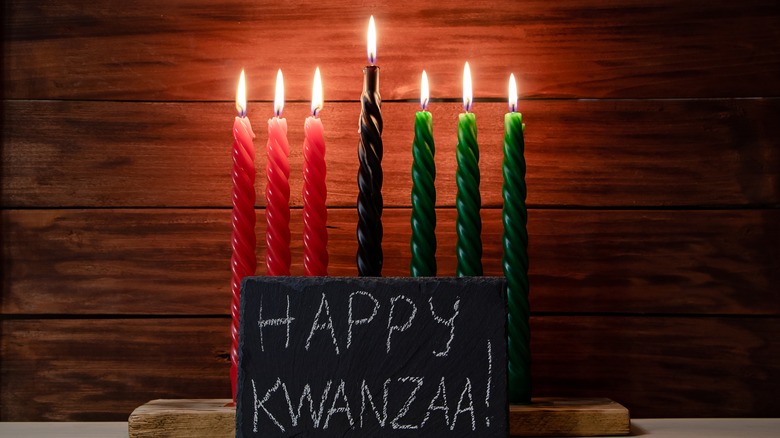The Symbolism Of Black-Eyed Peas And Collard Greens For Kwanzaa
Celebrated by millions of African-Americans every year, Kwanzaa is a holiday that honors history and heritage across the diaspora. Observed from December 26 through January 1, the Smithsonian National Museum of African Art explains that seven guiding principles — unity, self-determination, collective work and responsibility, cooperative economics, purpose, creativity, and faith — are commemorated each day with the lighting of the kinara. Of course, like many other holidays, food is a huge part of Kwanzaa festivities. And, of the many dishes enjoyed, black-eyed peas and collard greens are particularly symbolic, per Taste of Home.
From the Swahili word meaning "first fruits," the Institute of Culinary Education shares that on the sixth night of Kwanzaa, a giant feast known as Kuumba is held. Paying tribute to the diet of their ancestors that were brought to America, ingredients like mango, yams, and okra make their way onto most Kwanzaa dinner tables. That said, menus can include anything from traditional African stews and curries to Jollof rice.
Of these many dishes, black-eyed peas and collard greens tend to be the most prominently cooked during Kwanzaa celebrations with their presence linked deeply to their symbolism. But, what exactly do these foods represent?
Symbols of good fate and fortune
Food is always a key way to showcase culture. The types of ingredients used, the methods of preparation employed, and even when certain dishes are eaten, can say a lot about a culture. Consequently, the BBC explains that food is often highly symbolic because it closely relates to elements of religion, history, and tradition where the act of eating is tied to celebratory events.
Given that the black, red, and green colors of the Kwanzaa kinara and Pan-African flag are representative of pride, struggle, and hope, it's only natural that the dishes prepared during festivities also boast these colors. When it comes to two of the most iconic Kwanzaa dishes, Taste of Home explains that stewed collard greens are a symbol of good fortune, whereas black-eyed peas symbolize good luck — and adding cornbread to the mix only amplifies the symbolism. The bright and golden hue of the sweet bread is representative of gold when paired with peas, and, as Southern Living explains, gives a nod to wealth when stewed with tomatoes.
Curious to taste these symbolic (and delicious) dishes for yourself? Try whipping up a recipe for black-eyed peas and crispy collard greens.

